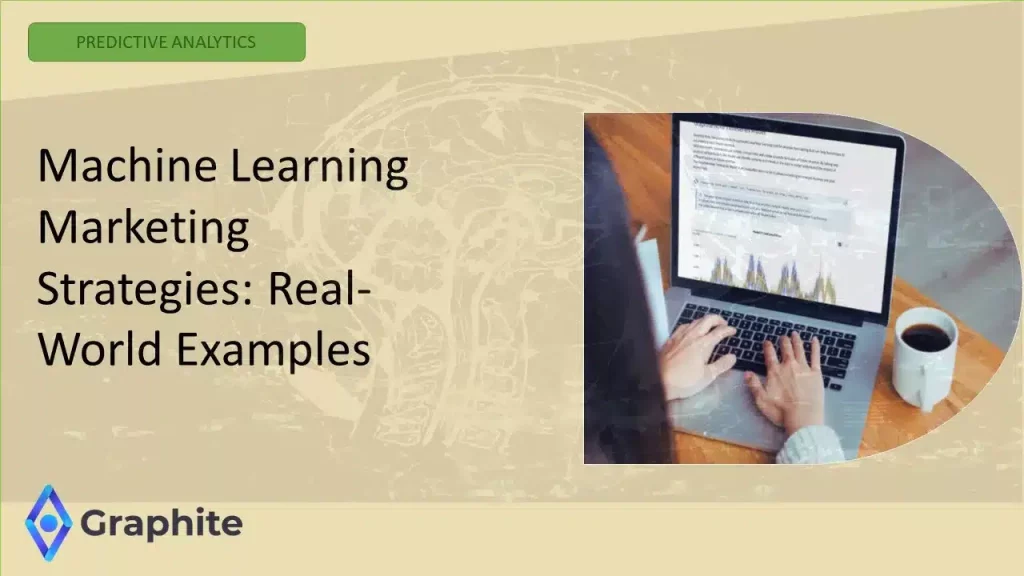AutoML (Automated Machine Learning)
As the landscape of data science continues to evolve, the emergence of Automated Machine Learning (AutoML) has sparked significant interest among businesses and technologists alike. This innovative approach simplifies the process of developing machine learning models, making it accessible to a broader audience. However, misconceptions about its capabilities and limitations can hinder its effective implementation. This article aims to demystify AutoML, exploring its components, benefits, challenges, and future prospects.
What is AutoML?
AutoML refers to the process of automating the end-to-end process of applying machine learning to real-world problems. It encompasses various tasks, including data preprocessing, feature selection, model selection, hyperparameter tuning, and model evaluation. By streamlining these processes, AutoML enables users to focus on deriving insights from data rather than getting bogged down in technical complexities. The automation of these tasks not only saves time but also reduces the potential for human error, which can be particularly detrimental in complex data environments. Furthermore, AutoML tools often come equipped with user-friendly interfaces that allow users to visualize the data and the modeling process, making it easier to understand the underlying mechanics of machine learning.
The Evolution of AutoML
The journey of AutoML began with the need to democratize machine learning. Traditionally, building effective machine learning models required extensive expertise in statistics, programming, and domain knowledge. However, as the demand for data-driven decision-making grew, so did the necessity for tools that could simplify this process. AutoML emerged as a solution, allowing non-experts to harness the power of machine learning. Over the years, the evolution of AutoML has been marked by significant milestones, including the development of open-source libraries and frameworks that have made these technologies more accessible. Notable examples include Google’s AutoML, H2O.ai, and DataRobot, which have contributed to the growing ecosystem of AutoML tools. These advancements have not only facilitated the adoption of machine learning across various sectors but have also spurred innovation in the field, leading to the creation of more sophisticated algorithms and methodologies.
Key Components of AutoML
AutoML systems typically consist of several core components:
- Data Preprocessing: This involves cleaning and transforming raw data into a format suitable for modeling. Data preprocessing is a critical step, as the quality of the input data directly impacts the performance of the machine learning model. Techniques such as normalization, handling missing values, and encoding categorical variables are essential to ensure that the data is ready for analysis.
- Feature Engineering: AutoML tools automatically identify and create relevant features that enhance model performance. Feature engineering is often considered an art form in data science, as it requires a deep understanding of the data and the problem domain. Automated feature engineering can significantly reduce the time and effort required to develop effective features, allowing practitioners to focus on higher-level analysis.
- Model Selection: The system evaluates various algorithms to determine the best fit for the given data. This process often involves comparing the performance of multiple models using cross-validation techniques, which help to ensure that the selected model generalizes well to unseen data.
- Hyperparameter Optimization: AutoML fine-tunes model parameters to improve accuracy and efficiency. Hyperparameter tuning is a crucial aspect of model development, as the right set of hyperparameters can make a significant difference in model performance. AutoML systems often employ techniques such as grid search, random search, or more advanced methods like Bayesian optimization to find the optimal hyperparameters.
- Model Evaluation: The performance of the model is assessed using various metrics to ensure its reliability. Evaluation metrics can vary depending on the type of problem being solved, such as accuracy, precision, recall, F1 score, or area under the ROC curve for classification tasks, and mean squared error or R-squared for regression tasks. A thorough evaluation process is essential to validate the model’s effectiveness and to ensure that it meets the business requirements.
Benefits of AutoML
The adoption of AutoML offers numerous advantages for organizations looking to leverage machine learning:
Increased Accessibility
One of the most significant benefits of AutoML is its ability to make machine learning accessible to a wider audience. By reducing the technical barriers associated with model development, individuals without extensive data science backgrounds can engage with machine learning projects. This democratization of technology empowers business analysts, product managers, and other stakeholders to participate in the data-driven decision-making process, fostering a culture of innovation within organizations. Moreover, as more people gain access to AutoML tools, the potential for diverse perspectives and ideas increases, leading to more creative solutions to complex problems.
Enhanced Efficiency
AutoML accelerates the model development process, allowing organizations to deploy solutions more quickly. This efficiency is particularly valuable in fast-paced industries where timely decision-making is crucial. By automating repetitive tasks, AutoML frees up data scientists and analysts to focus on more strategic initiatives, such as interpreting results, communicating findings, and developing new business strategies. Additionally, the speed at which models can be developed and tested enables organizations to iterate rapidly, adapting to changing market conditions and customer needs. This agility can provide a significant competitive advantage in today’s dynamic business environment.
Improved Model Performance
Through automated processes, AutoML can often achieve better model performance than manual efforts. By systematically exploring a vast range of algorithms and hyperparameters, AutoML identifies optimal configurations that may not be apparent to human practitioners. Furthermore, the ability to leverage ensemble methods, which combine multiple models to improve predictive performance, is often built into AutoML frameworks. This capability allows organizations to benefit from the strengths of various algorithms, leading to more robust and accurate predictions. As a result, businesses can make more informed decisions based on reliable insights derived from their data.
Challenges and Limitations of AutoML
Despite its advantages, AutoML is not without challenges. Understanding these limitations is essential for organizations considering its implementation.
Data Quality and Quantity
The effectiveness of AutoML heavily relies on the quality and quantity of the input data. Poor-quality data can lead to inaccurate models, regardless of the automation involved. Organizations must ensure that their data is clean, relevant, and representative of the problem at hand. This often requires investing in data governance practices, including data collection, storage, and management strategies. Additionally, organizations should consider the diversity of their data sources, as relying on a single source may introduce bias and limit the model’s applicability. Implementing robust data validation processes can help identify and rectify issues before they impact model performance, ensuring that the insights generated are both accurate and actionable.
Interpretability of Models
Another challenge is the interpretability of the models generated by AutoML systems. While automated processes can produce highly accurate models, understanding the rationale behind their predictions can be difficult. This lack of transparency can pose challenges in regulated industries where explainability is crucial. To address this issue, organizations may need to invest in additional tools and techniques that enhance model interpretability, such as SHAP (SHapley Additive exPlanations) values or LIME (Local Interpretable Model-agnostic Explanations). These methods can help stakeholders understand the factors driving model predictions, fostering trust and confidence in the automated solutions. Furthermore, promoting a culture of transparency and collaboration between data scientists and business stakeholders can facilitate better communication and understanding of model outcomes.
Overfitting Risks
AutoML systems may inadvertently lead to overfitting, where a model performs exceptionally well on training data but fails to generalize to unseen data. Organizations must implement robust validation techniques to mitigate this risk. Techniques such as cross-validation, where the dataset is divided into multiple subsets to ensure that the model is tested on different data points, can help assess the model’s generalization capabilities. Additionally, employing regularization techniques can prevent overfitting by penalizing overly complex models. It is also essential for organizations to continuously monitor model performance in production, as data distributions may change over time, necessitating model retraining or adjustment to maintain accuracy.
Future Prospects of AutoML
The future of AutoML appears promising, with ongoing advancements in technology and methodology. As machine learning continues to evolve, AutoML is expected to integrate more sophisticated techniques, such as:
Integration with Deep Learning
As deep learning models become increasingly prevalent, AutoML systems are likely to incorporate these techniques, enabling users to leverage the power of neural networks without requiring deep expertise. This integration could lead to the development of more advanced AutoML frameworks that can automatically select and tune deep learning architectures for specific tasks, such as image recognition, natural language processing, and time series forecasting. Furthermore, as hardware capabilities improve, including the availability of GPUs and TPUs, AutoML tools will be able to handle larger datasets and more complex models, expanding their applicability across various domains.
Enhanced Collaboration Tools
Future AutoML platforms may offer improved collaboration features, allowing teams to work together more effectively on machine learning projects. This could include shared workspaces, version control, and integrated communication tools. By fostering collaboration among data scientists, domain experts, and business stakeholders, organizations can ensure that machine learning initiatives align with strategic goals and deliver maximum value. Additionally, enhanced collaboration tools can facilitate knowledge sharing and best practices, helping teams to learn from each other’s experiences and successes. As organizations increasingly adopt a data-driven culture, the ability to collaborate effectively on machine learning projects will become a critical factor in achieving success.
Broader Application Areas
As AutoML matures, its applications are expected to expand beyond traditional domains. Industries such as healthcare, finance, and manufacturing are likely to benefit from tailored AutoML solutions that address their unique challenges. For instance, in healthcare, AutoML can be used to develop predictive models for patient outcomes, optimize treatment plans, and enhance diagnostic accuracy. In finance, AutoML can assist in fraud detection, risk assessment, and algorithmic trading. Meanwhile, in manufacturing, AutoML can optimize supply chain management, predictive maintenance, and quality control processes. The versatility of AutoML makes it a valuable tool for organizations across various sectors, enabling them to harness the power of data to drive innovation and improve operational efficiency.
Conclusion
AutoML represents a significant advancement in the field of machine learning, making it more accessible and efficient for organizations of all sizes. While it offers numerous benefits, understanding its limitations is crucial for successful implementation. As the technology continues to evolve, AutoML will undoubtedly play a pivotal role in shaping the future of data-driven decision-making. By embracing AutoML, organizations can unlock new opportunities for growth and innovation, positioning themselves to thrive in an increasingly competitive landscape. As we look ahead, it is essential for businesses to stay informed about the latest developments in AutoML and to invest in the necessary resources and training to fully leverage its potential.




